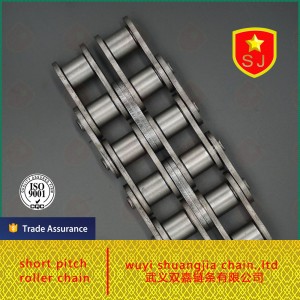In the field of machinery, roller chains are important components for transmitting power between rotating axes. They are used in a wide variety of industries including automotive, manufacturing and agriculture. Roller chains consist of interconnected links that transmit forces efficiently. However, not all roller links are created equal. In this article, we’ll take an in-depth look at the different types of roller links and their applications.
1. Standard roller link:
Standard roller links, also known as connecting links, are the most common type of roller chain. These links have two outer plates and two inner plates with rollers inserted between them. Connecting links are the primary means of connecting two lengths of roller chain together, providing the flexibility needed for smooth operation. They are usually symmetrical and are available in single- and double-stranded configurations.
2. Offset roller links:
Offset roller links, as the name suggests, are specifically designed to offset one of the roller chains. They are typically used in applications requiring higher tension or torque on one roller chain strand. Offset links allow the chain to run reliably and efficiently on sprockets of different sizes, compensating for any misalignment. It is important to note that offset links should only be used at low speeds and loads, as their use may reduce the overall strength and durability of the roller chain.
3. Half link:
A half-pitch link, also known as a single-pitch link or a half-pitch link, is a special roller link that consists of an inner plate and an outer plate on only one side. They allow precise adjustment of chain length and are ideal for applications requiring precise positioning. Half links are commonly used in conveyor systems, bicycles, motorcycles and other applications where fine adjustment of chain length is critical. However, they should be used with caution as they introduce potential weaknesses in the chain.
4. Open roller chain link:
Split links offer a more traditional method of joining roller links together. These links have additional pins that are inserted through the outer and inner plates and are secured by cotter pins or cotter pins. Open links provide increased stability and strength, making them suitable for heavy-duty applications requiring maximum power transfer. However, the open design makes them more challenging to install and remove than connecting links.
5. Riveted roller links:
Riveted links are similar to split links, but use rivets instead of cotter pins as a method of securing the pins. Riveted links take less time to install than split links, but they sacrifice some reusability because the rivets cannot be easily removed once installed. They are typically used in applications requiring moderate to heavy loads such as conveyors, industrial machinery and motorcycles.
Understanding the different types of roller links is critical to selecting the correct chain for a specific application. Whether standard connecting links, offset links, half links, split links or riveted links, each link has a specific purpose that contributes to the smooth operation and longevity of your roller chain. By considering the requirements and specifications of the application, an appropriate roller link can be selected to ensure optimum performance and reliability.
Post time: Aug-09-2023

